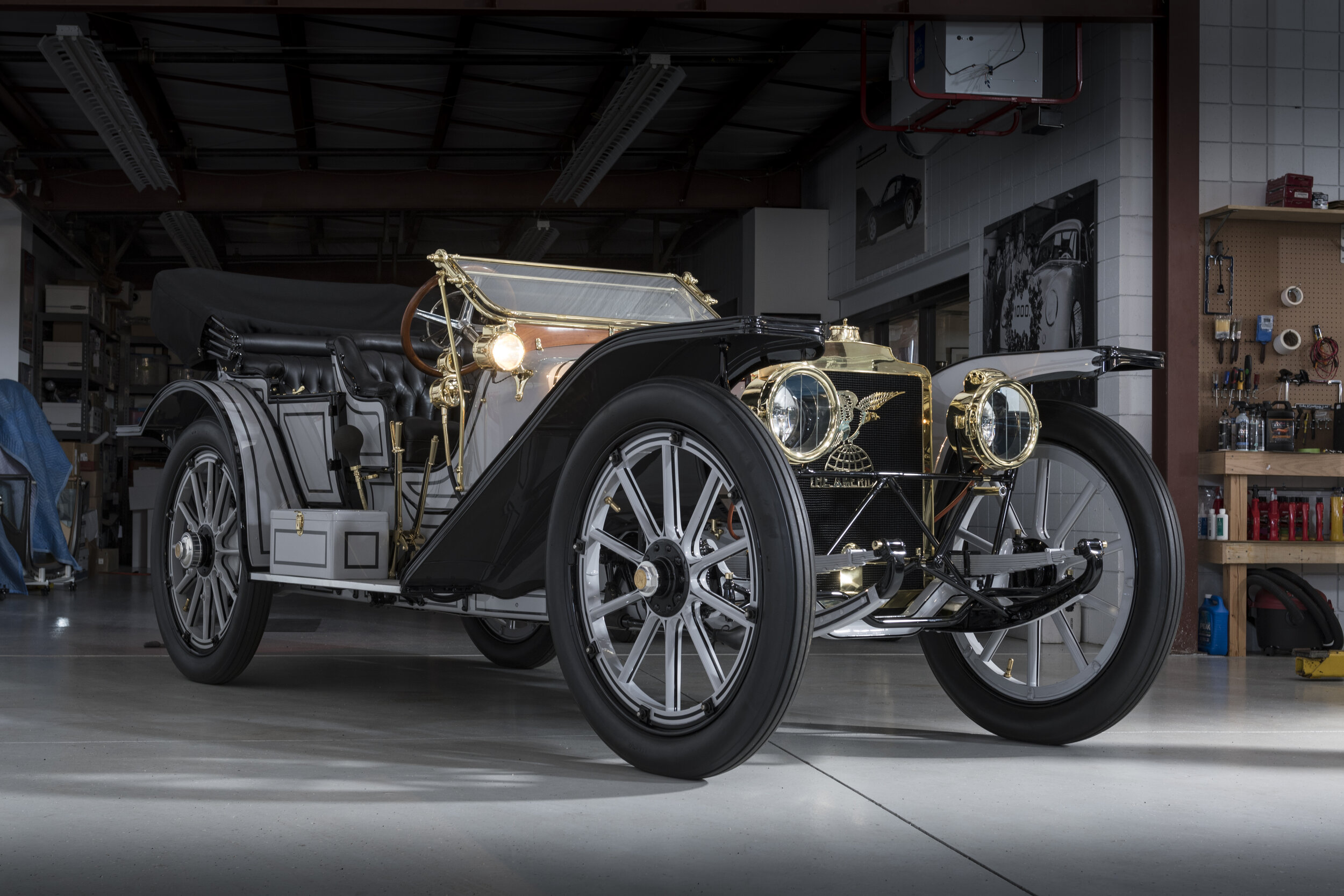1969 Chevrolet Camaro Z28
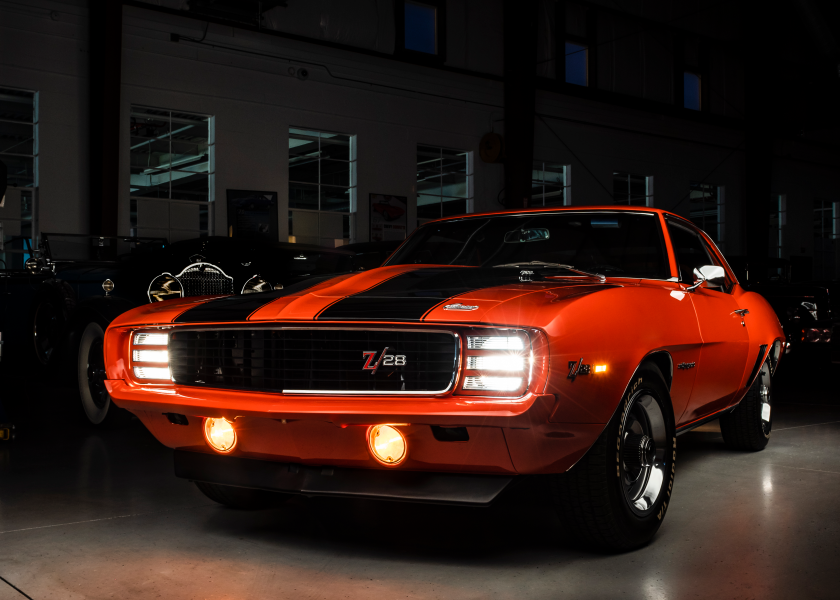

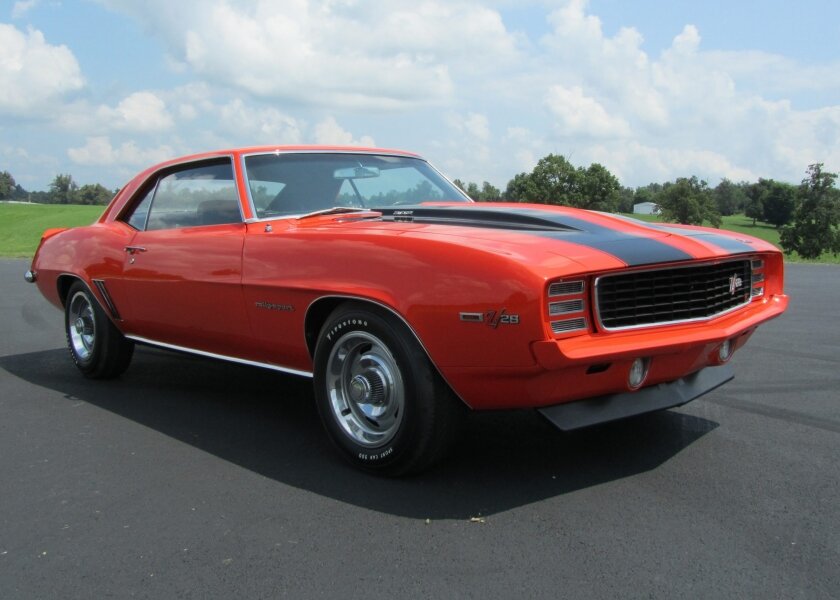
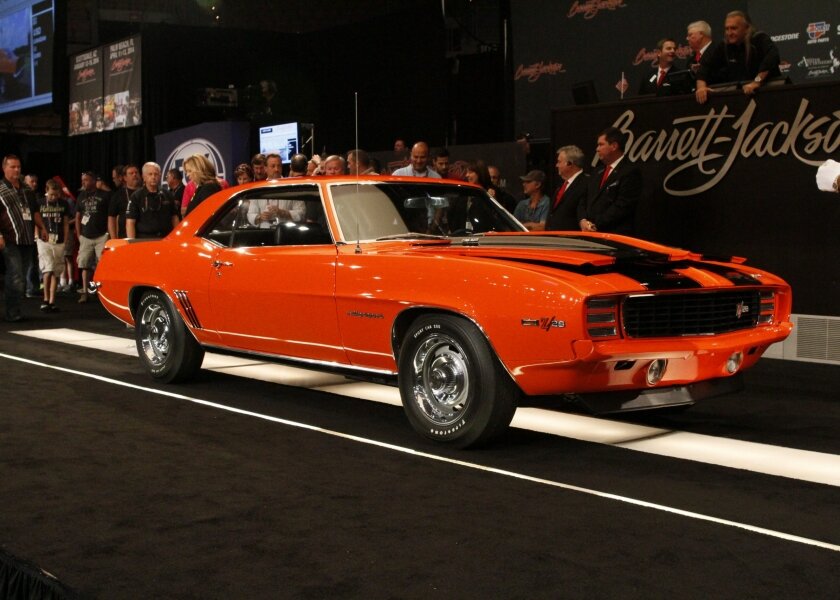
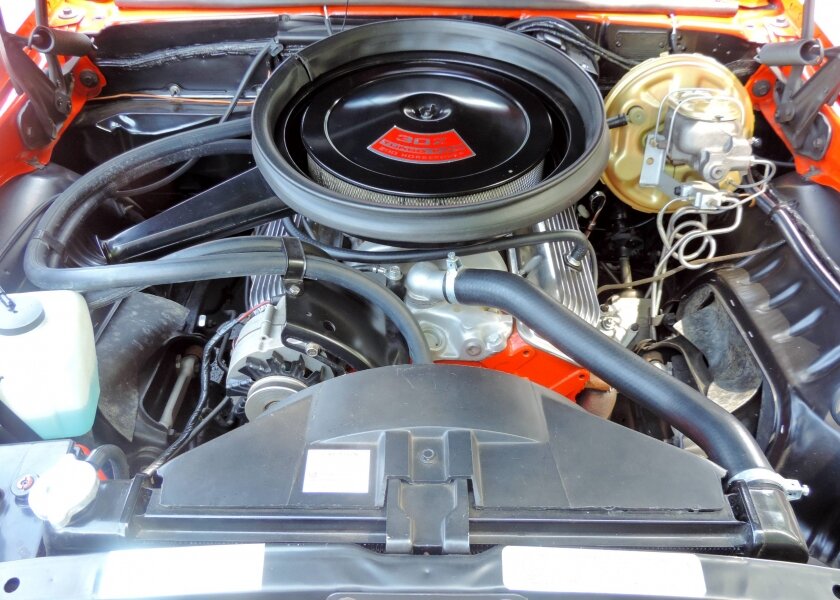
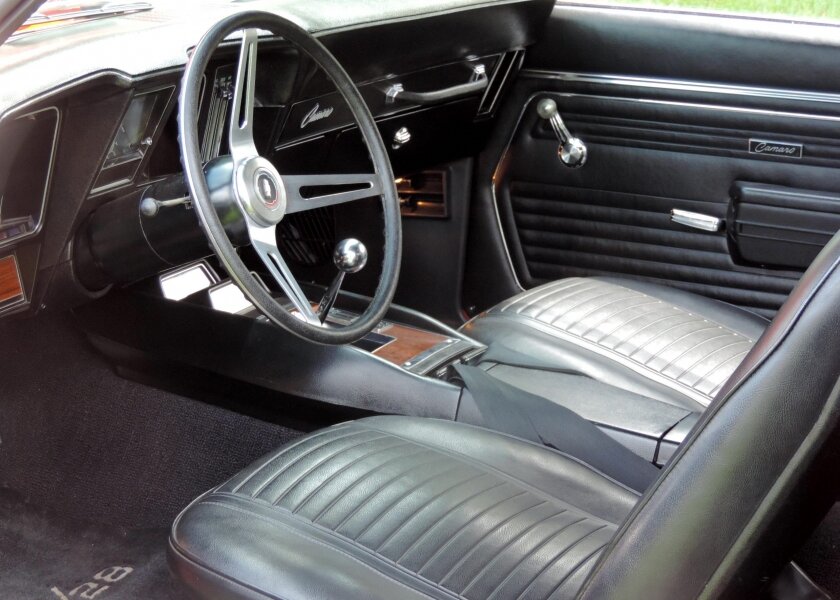
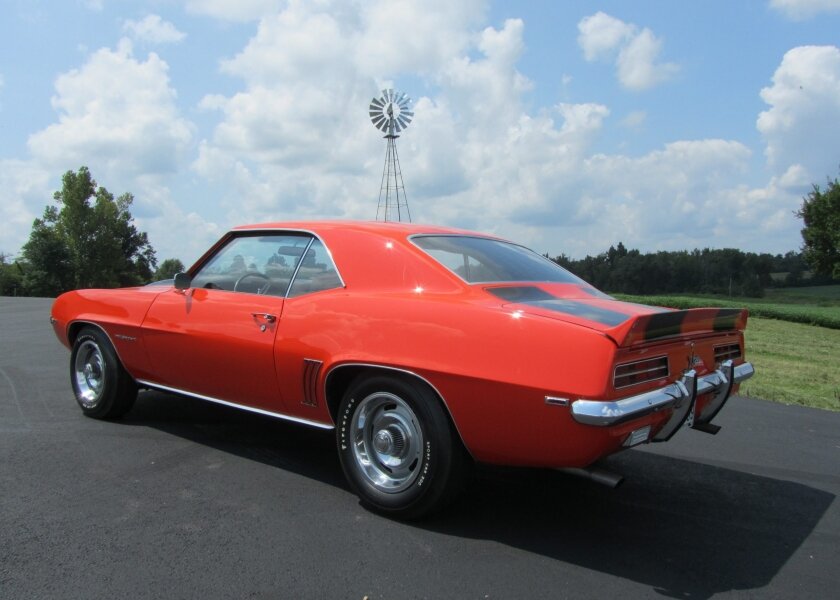
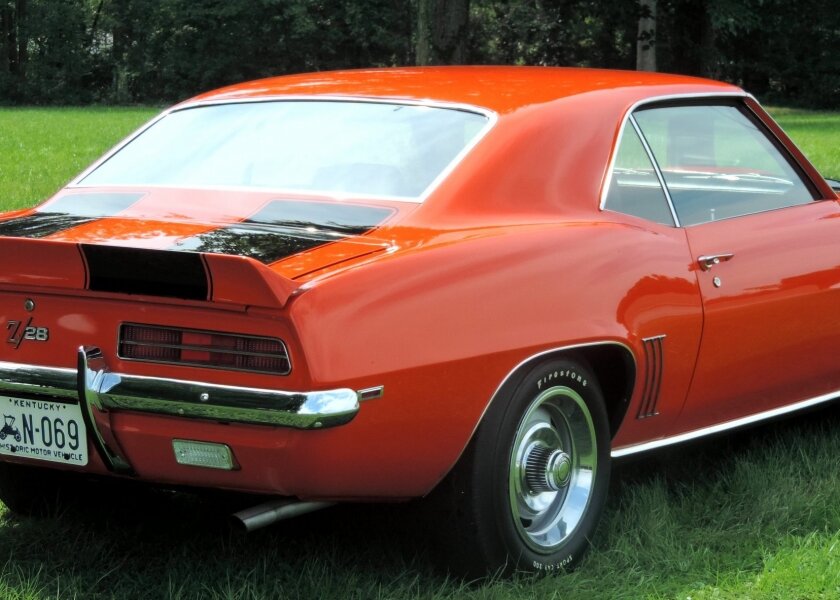
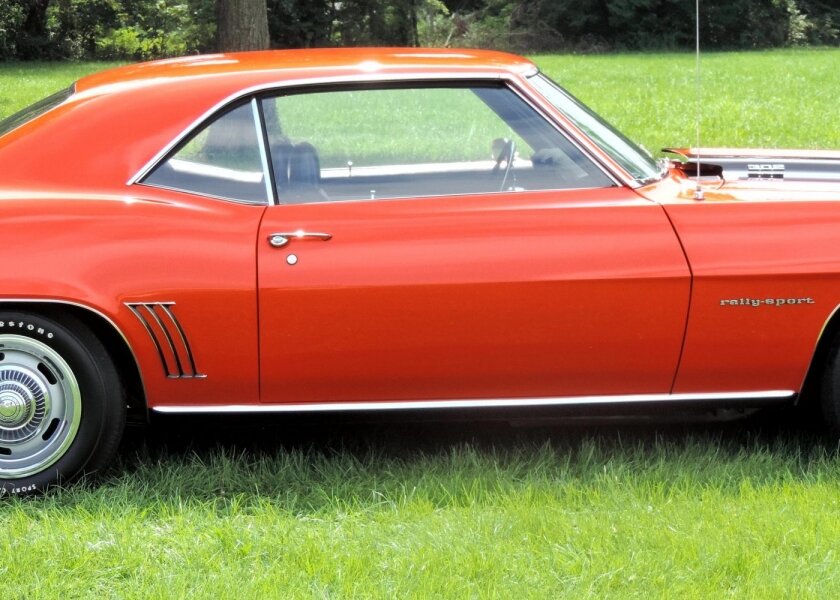
Lights: RS Package Hideaway Lights, Vacuum Operated
Beginning in the 1950’s, laws in the United States restricted freedom of headlight design for safety reasons. Lamps were ordered to meet requirements such as 7 inch (178 mm) round sealed beams with high-beam filament on focus, low-beam filament off focus; and other laws specified the placement of headlamps on the car. Almost all Camaros came equipped with headlights similar to most other cars in the industry. However, ticking the RS Package on the option sheet changed that.
The RS was an appearance package that included hidden headlights, revised taillights with back-up lights under the rear bumper, RS badging, and exterior bright trim. This package distinguished these Camaros from others, giving those cars a much more menacing look. The hidden headlights were a design feature unseen on other cars. The doors which covered the lights were vacuum operated (one vacuum for both lights), opening outwards at the flip of a switch.
This 1969 RS Z/28 is an X33 Code with all matching numbers. The engine is the original DZ302/290hp coupled to a Muncie 4-speed transmission and less than 32,000 original miles.
The first generation of the Chevrolet Camaro is one of the most influential sports cars in existence. However, when optioned with the RS appearance package and Z/28 performance package like the car you see here, the Camaro was transformed into a highly capable race car for a the road.
On June 28, 1966, General Motors held a live press conference in Detroit's Statler-Hilton Hotel, marking the first time that 14 cities were connected in real time via telephone lines. Chevrolet’s general manager Pete Estes began the news conference, stating that all attendees of the conference were charter members of the Society for the Elimination of Panthers from the Automotive World, and that this would be the first and last meeting of SEPAW. Estes then announced a new car line, project designation XP-836, with a name that Chevrolet chose in keeping with other car names beginning with the letter C, such as the Corvair, Chevelle, Chevy II, and Corvette. He claimed the name suggested the comradeship of good friends, as a personal car should be to its owner and that to the public, the name meant just what they thought the car would do: go. the automotive press asked Chevrolet product managers, what is a Camaro? The answer: a small, vicious animal that eats Mustangs.
The Camaro was introduced in direct response to the Mustang and the new “pony car” class of cars. Available as a two-door coupe or convertible with rear seats, the Camaro quickly evolved, becoming a reputable street performance car with seemingly endless interior, exterior and engine options. The true purpose behind the Camaro, however, was to race, and the Z28 package turned the Camaro into a race car for the road. The Z/28 performance package was designed (with further modifications) to compete in the SCCA Trans-Am Series. It included a solid-lifter 302 cu in (4.9 L) V8, 4-speed transmission, power disc brakes, and two wide "skunk" stripes down the hood and trunk lid.
Specifications
Engine: 4.9L V8 (302 C.I.)
Horsepower: 290 @ 5800 RPM
Torque: 290 ft-lbs @ 4200 RPM
Transmission: Munice 4-Speed-Manual
0-60 MPH: 7.4 Seconds
Top Speed: 135 MPH
Brakes: Power Assisted-Front disc/Rear Drum
Suspension: Front: Independent Single Lateral Arm, Coil Spring and Tube Shocks
Rear: Salisbury Rear Axle with Multileaf springs, Staggered Tube Shocks
Weight: 3185 lbs
Lights: RS Package Hideaway Lights, Vacuum Operated



